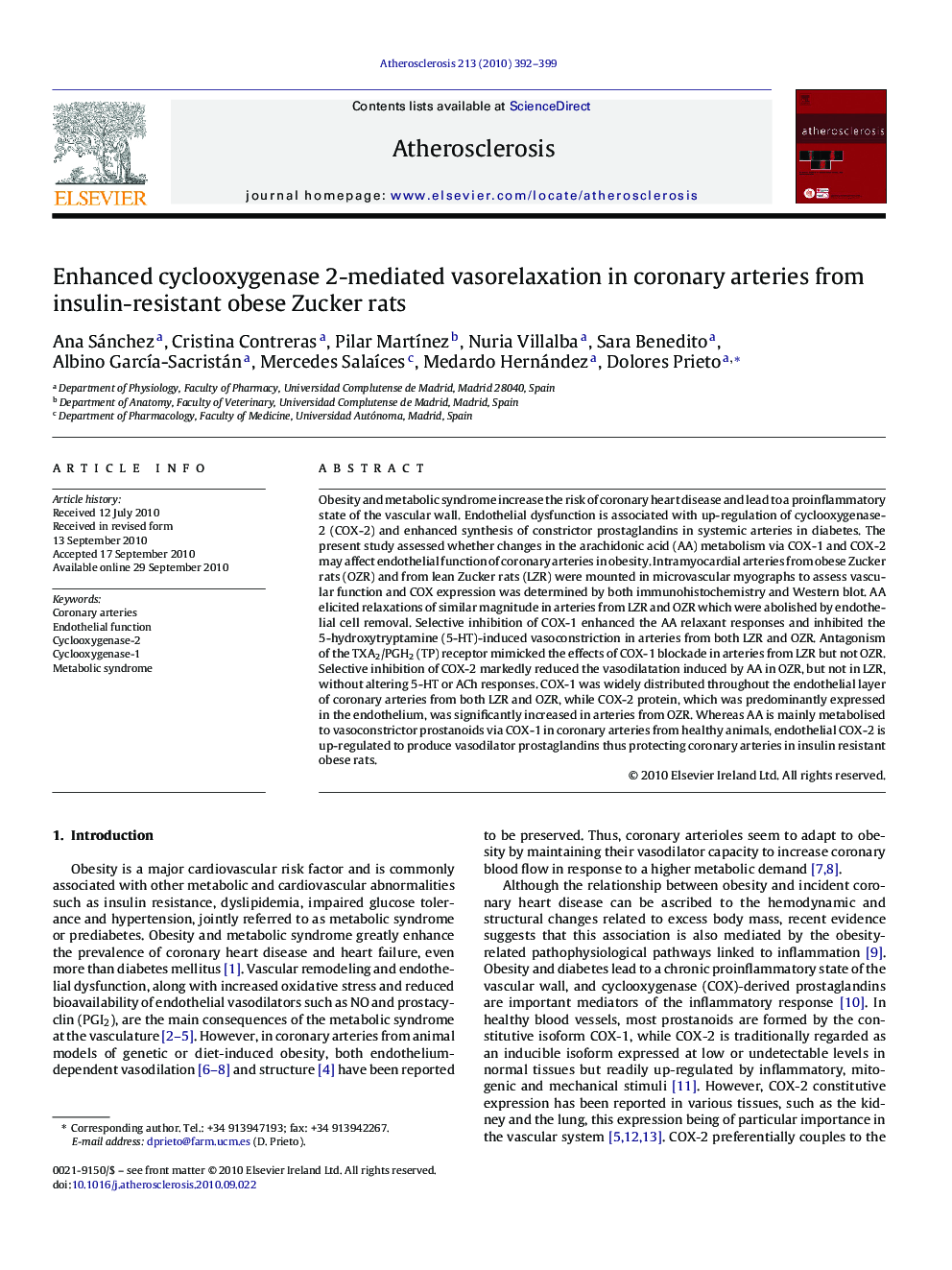| Article ID | Journal | Published Year | Pages | File Type |
|---|---|---|---|---|
| 2892932 | Atherosclerosis | 2010 | 8 Pages |
Obesity and metabolic syndrome increase the risk of coronary heart disease and lead to a proinflammatory state of the vascular wall. Endothelial dysfunction is associated with up-regulation of cyclooxygenase-2 (COX-2) and enhanced synthesis of constrictor prostaglandins in systemic arteries in diabetes. The present study assessed whether changes in the arachidonic acid (AA) metabolism via COX-1 and COX-2 may affect endothelial function of coronary arteries in obesity. Intramyocardial arteries from obese Zucker rats (OZR) and from lean Zucker rats (LZR) were mounted in microvascular myographs to assess vascular function and COX expression was determined by both immunohistochemistry and Western blot. AA elicited relaxations of similar magnitude in arteries from LZR and OZR which were abolished by endothelial cell removal. Selective inhibition of COX-1 enhanced the AA relaxant responses and inhibited the 5-hydroxytryptamine (5-HT)-induced vasoconstriction in arteries from both LZR and OZR. Antagonism of the TXA2/PGH2 (TP) receptor mimicked the effects of COX-1 blockade in arteries from LZR but not OZR. Selective inhibition of COX-2 markedly reduced the vasodilatation induced by AA in OZR, but not in LZR, without altering 5-HT or ACh responses. COX-1 was widely distributed throughout the endothelial layer of coronary arteries from both LZR and OZR, while COX-2 protein, which was predominantly expressed in the endothelium, was significantly increased in arteries from OZR. Whereas AA is mainly metabolised to vasoconstrictor prostanoids via COX-1 in coronary arteries from healthy animals, endothelial COX-2 is up-regulated to produce vasodilator prostaglandins thus protecting coronary arteries in insulin resistant obese rats.
